L.Opdyke French Aeroplanes Before the Great War (Schiffer)
Deleted by request of (c)Schiffer Publishing
Borel
In 1909 Gabriel Borel and his brother began their interest in aviation and founded a flying school at Mourmelon. He collected a stable of young men who were to become famous on their own, including Antoine Odier, Francois Denhaut, Leon Morane, Jules Vedrines, Rene Simon, and Raymond Saulnier. At first they sold Bleriots and Bleriot copies; Morane and Saulnier developed the little monoplane known first as Morane-Borel, which in various developments became famous in meets and races all over France. But in 1911 the Borel brothers stole a L 1000 check sent to Jules Vedrines, and their whole team abandoned them. Morane and Saulnier went on to develop the monoplane series known as Morane and Morane-Saulnier; their designs flew through World War II. They appointed Antoine Odier, who designed further monoplanes known sometimes as Borel - sometimes as Borel-Odier. Denhaut, the flyingboat designer, worked for the Borels, and his work was known as Borel-Denhaut; the work of Ruby was a single machine, the odd aero-torpille Borel-Ruby.
Between 1910 and 1914 Borel designed a series of monoplanes, seaplanes, and flyingboats. In the meantime, the Borel firm also produced Morane-Saulniers; and during the course of WWI, Caudrons, Nieuports, and Spads as well. The complete series designation system for Borel is unclear.
Borel-Moranes: Based originally on the Bleriot XI, to the design of which as well as of the early Moranes Raymond Saulnier had contributed heavily, the Borel-Moranes were very similar also to each other. Mostly 2-seaters with V-leg undercarriages and twin tailskids, they varied in several features:
engines (usually Gnome or Anzani)
elevators, either oyster-shell-tip style or full-width with tip balances raked either forward or aft
pyramid-shaped pylon for wing bracing
double tailskids, either braced from the front, or long and trailing, braced from behind
wing panels usually 11, 12, or 17 ribs long
undercarriage skids longer or shorter or absent (one model had no cross-axle)
fuselage covering, fully covered or partly, in various proportions
cowling shape in front of the pilot
Some samples:
1910 (?): A light Bleriot look-alike with 12 ribs/panel, a Bleriot XI rudder, tip elevators, and a single tailskid.
1911: In the Exposition, a 12-rib single-seater and a 17-rib 2-seater, each fully covered, with trailing skids, fully covered fuselages, and balanced elevators with back-raked balances; the latter appeared with a belly-pad under the center fuselage. Also, an experimental all-metal fuselage with twin cockpit cut-outs.
Also: Vedrines' and Mestach's 12-rib single seaters with wheel-skids, trailing tailskids, and forward-raked tip elevators. An 11-rib single-seater with back-braced skids, marked VIII on the rudder. A pretty 2-seater with fully cowled Gnome and balanced elevators.
Morane-Saulnier
Raymond Saulnier's early designs are described in the section under his name. In 1911 he and his friends Leon Morane and Gabriel Borel joined to form a new firm, La Societe Anonyme des Aeroplanes Morane-Borel-Saulnier, and built the Morane-Borel monoplane flown by Jules Vedrines in the Paris-Madrid flight of 21-26 May - and in several other meets as well; and a 2-seater.
Morane-Borel: This was a single-seater similar to the Bleriot XI, but with a simple V-leg landing gear with a small skid at each wheel, a tall double tailskid aft, elliptical wingtips and a high rectangular rudder; the tailplane was fitted with tip elevators. The aft fuselage was sometimes left uncovered.
(Span: 9.3 m; length: 6.9 m; wing area: 14.5 sqm; top speed: 111 kmh; 50 hp Gnome)
A 2-seater was entered in the 1911 Concours Militaire; it was similar to the single-seater, but with a larger multi-strut 4-wheel undercarriage, and a tall angular rudder. The fuselage was short in proportion, with the rear section uncovered. At least once it was fitted with a pair of small wheels forward.
On 10 October 1911 the firm changed its name to Societe Anonyme des Aeroplanes Morane-Saulnier.
Журнал Flight
Flight, April 8, 1911.
PARIS TO POITIERS AND BACK AT 90 M.P.H.
THE Morane monoplane has demonstrated its remarkable speed qualities on several occasions recently, but one of the most extraordinary performances was that just made by Vedrines in an attempt to fly from Paris to Pau. Leaving Issy at half-past six on the morning of the 28th ult. he flew straight through to Poitiers without a stop, landing there at thirty-five minutes past nine, having accomplished the journey of 335 kiloms. at a speed of 109 k.p.h. A large crowd of people assembled on the Chauviniere Grounds to witness the landing, and in order to avoid running into them Vedrines had to land somewhat awkwardly, damaging the chassis of his machine and also the propeller. On the following day the bad weather precluded any flying, and as the conditions had not greatly improved on the 30th, Vedrines determined to fly back to Paris and make a fresh start. On the evening of the 30th he made a flight at a height of 1,500 metres above Poitiers, while on the following day he flew back to Paris, when the remarkable speed attained during the outward trip was excelled, the time for the 335 kiloms. being returned at 2 hrs. 12 mins., giving a speed of 150.9 k.p.h. In this case the aviator was assisted by a following wind, but in spite of this the speed attained by this combination of Morane monoplane with Gnome engine and Chauviere propeller is little short of marvellous. On Sunday morning M. Vedrines left Issy on a second attempt to fly to Pau. Having lost his bearings somewhat owing to the thick fog he landed at Varennes-sur-Allier, 341 kiloms. from Paris. He then determined to go on to Bussieres, where his wife and children were staying. His flying time for the 500 kiloms. was 3 hrs. 56 mins., and he proposed completing the journey to Pau on the 3rd.
Flight, July 29, 1911.
THE MORANE MONOPLANE.
ONE of the most expert and experienced pilots that ever took his seat on the Bleriot monoplane was M. Morane, whose flights at Bournemouth last year will remain long in the memory of those who witnessed them. It is, therefore, only natural that the machine to which he has given his name should itself closely resemble the pioneer model that has now been so often copied. To the casual observer, the Morane and the Bleriot monoplanes will probably be indistinguishable at a glance, for the differences are of a kind that do not force themselves upon the eye.
One, for instance, that is more easily seen in a drawing than in the actual machine is the plan form of the wings, in which it will be observed that the rear spar is longer than the front spar, whereas in the Bleriot type the reverse is the case. Also, it will be noticed that the chassis differs materially from the Bleriot design, and embodies the wheel and skid combination originated by Karman. On the Morane monoplane, the skids are very short, we are tempted to say unduly short; but then it must be borne in mind that this machine has been built as a racer, and every effort has been made to reduce the weight. As a result, it is stated to weigh only 440 lbs. without the pilot. Under such circumstances, the presence of the skids must be regarded merely as a precaution against the complete disablement of the machine in the event of the wheels collapsing. Their use is not exactly intended to be a protection to the inexperienced pilot who brings the aeroplane to earth on its nose every now and again.
The chassis of the Morane monoplane is light but strong, and it is sufficiently evident from a glance at the accompanying sketch that there has been no wastage of material. The skids are rather close together, and their attachment to the body is carried out more or less on the principle of the A frame. The body of the machine itself is of the rectangular lattice girder type with ash spars and struts reinforced by wire diagonals. The fore part of the body is surfaced with fabric in order to give the machine something ot a keel, but the rear part is left open in order to reduce the surface against which the wind can strike to slew the machine out of its course. The rudder and the elevator are adjacent to one another at the extreme rear of the body, where they form, with the fixed plane, the tail of the machine. The fixed plane has an area of 12 sq. ft., and its two pivoted extremities, which constitute the elevator, have a total area of 11 sq. ft. The rudder, which is mostly above but also partly below the fixed tail planes, has a total area of 9 sq. ft.
The control of the machine is operated by a hand wheel that is rigidly mounted on the top of a vertical column, which is itself universally supported to the body. A to and fro movement controls the elevator and a sideways movement warps the wings. The rudder is independently operated by a pivoted cross bar under the pilot's feet. The pilot himself sits in line with the trailing edge of the wings and his weight is balanced by that of the engine, which is mounted in front under a shaded guard that protects the pilot from the oil and exhaust. The engine normally employed is a 50-h.p. Gnome rotary, which drives direct a two-bladed wooden propeller of 6 ft. 6 in. diameter.
Flight, November 11, 1911.
Model Construction.
I enclose herewith two photos I have taken of a model Morane-Borel monoplane which I hope you may consider of sufficient interest to reproduce in your excellent paper. The model was entirely made by a boy of sixteen - Robairt Dagonet - out of odd pieces of wood and wire, and cost nothing to build!
Chatham. J. C. HEWETT, Major, A.P.D.
Flight, January 6, 1912.
PARIS AERO SHOW.
Borel Monoplanes.
BOTH the monoplanes shown on the Borel stand, a 50-h.p. single-seater and a 70-h.p. military two-seater, are identical so far as their general outlines are concerned, with the machine with which Vedrines made such a good performance in connection with the Daily Mail Circuit of Britain. On this account a lengthy description is scarcely necessary. The main features evident in the machine are the absence of dihedral angle between the wings, the simple and neat landing gear, the port-a-faux mounting of the Gnome engine, a system which lends itself to great neatness of design and accessibility, and the lightness of the construction throughout.
Borel monoplane.
Principal dimensions :-
Length 23 ft.
Span 30 "
Area 154 sq. ft.
Weight 550 lbs.
Speed 70 m.p.h.
Motor 50-h.p. Gnome.
Price L880.
Two-seater military :-
Length 26 ft.
Span 40 ,,
Area 220 sq. ft.
Weight 600 lbs.
Speed 60 m.p.h.
Engine 70-h.p. Gnome.
Price L1,020.
Flight, May 4, 1912.
THE ACCIDENT TO VEDRINES.
IT came as a great shock to most followers of aviation on Monday to hear that Vedrines, the popular idol of France, had met with a serious accident. He had announced his intention of flying from Brussels to Madrid in one day, but as he incidentally wished to compete for the Coupe Pomeroy - for the longest flight in a straight line - and the condition for that cup calls for a start from French soil, he eventually decided to make a beginning from Douai. He intended to stop at Villacoublay, Poitiers, Bordeaux, Biarritz and Burgos, and starting from Douai at 5.15, he expressed the hope of being in the Spanish capital by 6 o'clock. He started off at a great speed from Douai, following the railway line to Paris. He was at a good height when passing St. Denis and St. Quentin, but when over Enghien at about a quarter past six, it was observed that his motor was not firing regularly. At Epinay he seemed to prepare to come down, but when a short distance from the ground, the aeroplane capsized and fell on to the railway line. A level crossing keeper at once notified the signalman, with the result that an express train which was practically due was stopped, while another train which just previously Vedrines had been racing pulled up just by the wreck. The aviator, who it was feared at first was dying, was placed in the train and taken to Paris to the Lari boisiere Hospital. There the doctors found that, although there were no bones broken, the injuries were so severe that it was feared at first there was no hope of recovery. Later bulletins, however, are slightly more hopeful.
As to the cause of the accident this is at present a mystery, but it is thought that in view of motor troubles Vedrines intended to land at Epinay, and it might be that he selected a landing place, but after vol planing down and finding that it was a field of long grass, he tried to rise again. He then probably got into difficulties owing to his motor not re-starting, and he may have been caught by one of the telegraph wires bordering the railway. It is still hoped, however, that the aviator, by the skill of the doctors, will recover completely and then maybe the mystery will be cleared up.
It would appear that Vedrines' injuries might not have been so serious had he yielded to the advice of M. Deperdussin and worn a safety helmet, but he was so confident that he preferred to do without one. Immediately on hearing of the accident, the French Minister of War, M. Millerand, put Vedrines' name forward for the Legion of Honour.
Flight, July 20, 1912.
THE MILITARY COMPETITION - THE MACHINES.
THE BOREL MONOPLANE.
WE are able to publish this week two photographs of the aeroplane that the Societe Anonyme des Aeroplanes Borel are entering for the War Office Competitions. The pilot Chambenoit has been engaged to fly it at Salisbury.
In the machine, except that it is slightly larger all round in order to account for the extra weight of and accommodation for the passenger, there is little evidence of difference from the single-seater model which, with that master pilot Vedrines at the lever, carried everything before it in the events of 1911. That machine was undoubtedly a very good one, being designed by M. Saulnier. It was then called the Morane monoplane. Some time later its style was changed to the Morane-Borel monoplane. Another period, and a split occurred in the firm, Leon Morane and M. Saulnier branching off, forming their own company and creating the Morane-Saulnier monoplanes. So the name of the monoplane changed again - now it is the Borel monoplane.
But throughout all these changes of administration the design of the machine remained practically unaltered, and so it remains to-day. To the more or less casual observer, about the only point at which this two-seater Borel differs, except as regards size and passenger accommodation, from Vedrines' machine in the Circuit of Britain, is in the design of the tail. On this present monoplane, the elevators are formed by balanced flaps hinged to the rear edge of the stabilizer. But even this is not a totally original point. It has been standard practice with the Borel monoplane for the past few months. In its general outline the monoplane follows the design of the Bleriot to a very great extent. Its only fundamental points of difference from that monoplane are that its landing gear is of the wheel and skid type, its wings have no dihedral angle, and that they are reversed in shape to the Bleriot. By this latter statement we mean that the Borel wings possess the same characteristic rounded tips as the Bleriot, but they fly with the bigger curve leading. In flight, the wings are somewhat analogous to a Chauviere propeller-blade, and score on two points - this form of tip reduces to a great extent "end losses," and a very powerful correcting warp is obtained. The present monoplane is equipped with one of the new 12 litre 80-h.p. Gnome engines, protruding from the front of the fuselage without any bearing between crank-case and propeller. The seats are arranged in tandem.
Main characteristics :-
Motor 7-cyl. 80-h.p. Gnome; rotary
Span 34 ft.
Overall length 23 ft.
Area 165 sq. ft. approx.
Speed 70m.p.h.
Flight, November 27, 1914.
EDDIES.
Writing from Chicago, Ill., U.S.A., Earl S. Daugherty, the American aviator, tells me that he has bought a 50 h.p. Morane-Borel monoplane on which he is doing quite a lot of flying. The machine is similar to the one flown by Vedrines in his Paris-Madrid flight, and the Gnome with which it is fitted is said to be the actual one used by Vedrines. At any rate it is numbered 75, so it can't be very new. Up to the present it has, Mr. Daugherty says, thoroughly made good.
 |
L.Opdyke - French Aeroplanes Before the Great War /Schiffer/
|
| An early Borel, 1910. Note the single tailskid.
|
 |
Журнал - Flight за 1911 г.
|
| The Morane monoplane on which M. Vedrines last week accomplished his splendid flight from Poitiers to Issy in 2 hrs. 12 mins. Note the twin skids, tip elevators, and taller rudder.
|
 |
Журнал - Flight за 1912 г.
|
| THE MILITARY COMPETITION MACHINES. THE 80-H.P. GNOME-BOREL MONOPLANE. - Three-quarter view.
|
 |
Журнал - Flight за 1912 г.
|
| THE MILITARY COMPETITION MACHINES. THE 80-H.P. GNOME-BOREL MONOPLANE. - Front view.
|
 |
L.Opdyke - French Aeroplanes Before the Great War /Schiffer/
|
| Daucourt in his Morane leaving Paris for Cairo, 30 October 1913. Note the twin skids, now-traditional Morane rudder shape, and separate trailing elevators.
|
 |
L.Opdyke - French Aeroplanes Before the Great War /Schiffer/
|
| The Morane-Borel, similar to the Bleriot XI. This is Vedrines on 9 August 1911 in the Coupe Michelin race.
|
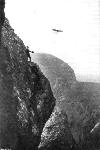 |
Журнал - Flight за 1911 г.
|
| PARIS-MADRID RACE. - Vedrines' monoplane passing over the Pyrenees,
|
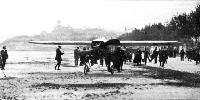 |
Журнал - Flight за 1911 г.
|
| PARIS-MADRID RACE. - Vedrines' arrival at San Sebastian.
|
 |
Журнал - Flight за 1911 г.
|
| EUROPEAN AVIATION CIRCUIT. - The first man - Vedrines - to arrive at Hendon Aerodrome on Monday, he having started from Calais at 4 a.m., and after making stops at Dover and Shoreham, landed at Hendon at 8h. 34m. 53 1/5 s. To the left is Thiry, and on the right Ramondon, his two trusty assistants throughout the whole race.
|
 |
Журнал - Flight за 1911 г.
|
| DAILY MAIL CIRCUIT OF BRITAIN. - Vedrines on his Morane-Borel just away for Hendon.
|
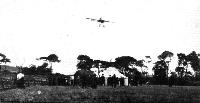 |
Журнал - Flight за 1911 г.
|
| The first arrival at Edinburgh. Vedrines planing down over the Timekeeper's hut.
|
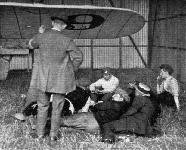 |
Журнал - Flight за 1911 г.
|
| CIRCUIT OF BRITAIN. - Vedrines "at rest" during his compulsory stopping time at Shoreham, before the last lap to Brooklands.
|
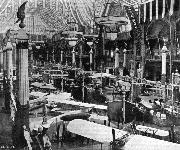 |
Журнал - Flight за 1911 г.
|
| GENERAL VIEW OF THE THIRD PARIS AERO SALON. - The machine at the bottom of the photograph is the Bleriot 100-h.p. "Aeronef," built to the order of M. Henri Deutsch de la Meurthe. On the same side, but towards the centre of the Exhibition, may be seen the Zodiac biplane and the Borel and Deperdussin monoplanes, while opposite are the Train and H. Farman monoplanes and Savary and M. Farman biplanes.
|
 |
Журнал - Flight за 1914 г.
|
| THREE HISTORIC MACHINES IN LINE AT HELIOPOLIS. - In the centre is Marc Pourpe's 60 h.p. Gnome-Morane-Saulnier, which he flew from Cairo to Khartoum and is now flying back - this is the identical machine on which Garros crossed the Mediterranean on the left is Vedrines 80 h.p. Gnome Bleriot which was flown from Paris to Cairo; while on the right is Bonnier's 80 h.p. Gnome-Nieuport, which has also been flown from Paris to Cairo.
|
 |
Журнал - Flight за 1914 г.
|
| FLYING AT HELIOPOLIS. - The first Hangar in Egypt to fly the British flag. The machine in front is Mr. W. Oswald Watts' 60 h.p. Blerlot single-seater, and behind inside may be noticed Marc Pourpe's Khartoum 60 h.p. Morane-Saulnier on which, half an hour after the photograph was taken, he started away and flew to Suez in 1 hr. 10 mins., very fine going.
|
 |
H.Cowin - Aviation Pioneers /Osprey/
|
| Knights of the air: this evocative image of a pair of two seat Borel Monoplanes, plus cavalry, was taken a month or so before the outbreak of World War I. As befitted what was then the world's leading aeronautical nation, the French military air service of the time had mostly monoplanes. The particular machines seen here belonged to the escadrille, or squadron, led by Roger Sommer of pre-war aviation fame, who had learned to fly with Henry Farman in 1909 and who, in the spring of 1910 shared with his erstwhile instructor the honour of making the first night flights by aeroplane. Interestingly, the original note with this picture stated that the aircraft were bomb, as opposed to gun carriers.
|
 |
Журнал - Flight за 1914 г.
|
| Earl S. Daugherty, the American aviator, in his Gnome-engined Morane-Borel monoplane. This machine is the fifteenth Mr. Daugherty has piloted. On the right he is seen just getting away.
|
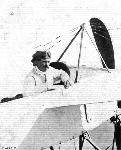 |
Журнал - Flight за 1911 г.
|
Vedrines, the second man back, on his Morane Borel.
Vedrines, the great French flyer, whose unfortunate accident on Monday has once more laid him by the heels, in a characteristic attitude when on flying bent.
|
 |
L.Opdyke - French Aeroplanes Before the Great War /Schiffer/
|
| Taddeoli at a tense moment in take-off at Bern, Switzerland.
|
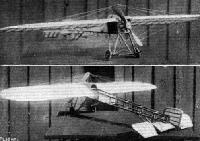 |
Журнал - Flight за 1911 г.
|
|
|
 |
Журнал - Flight за 1911 г.
|
| PARIS-MADRID RACE. - Diagrammatic sketches of some of the machines entered in the race.
|
 |
Журнал - Flight за 1912 г.
|
|
|
 |
Журнал - Flight за 1911 г.
|
| MONOPLANES AND BIPLANES IN THE DAILY MAIL CIRCUIT ROUND GREAT BRITAIN. - From these every machine can be readily identified either in flight or on the ground.
|
 |
Журнал - Flight за 1912 г.
|
|
|
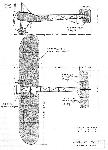 |
Журнал - Flight за 1911 г.
|
|
|


























